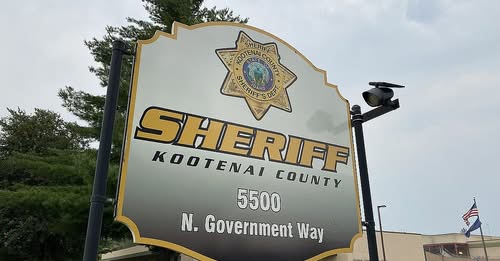The slopes of Canfield Mountain, a prominent landmark nestled in the northern Idaho wilderness near Coeur d’Alene, became the unthinkable scene of an active shooter crisis on Saturday, as firefighters battling a brush fire on East Nettleton Gulch Road suddenly found themselves under gunfire. In a region accustomed to the unpredictability of wildfires, the added dimension of armed violence shattered expectations and forced emergency crews into immediate retreat. The unfolding situation left multiple firefighters injured and sent shockwaves through the tight-knit communities of Kootenai County.
The gravity of the incident was swiftly confirmed by Northern Lakes Fire Protection District Chief Pat Riley, who stated unequivocally that “multiple firefighters were shot while working to contain the blaze.” The confirmation, chilling in its clarity, arrived as the Kootenai County Sheriff’s Office simultaneously issued a stark emergency alert to area residents: “Active shooter at Canfield Mountain. Injuries are reported, but the extent is unknown. Avoid the area.” What had begun as a fire call had transformed within moments into a tactical crisis.
Authorities quickly began mounting a comprehensive, multi-tiered response. Law enforcement officers, paramedics, and federal coordination units surged into the area with one goal: secure the scene, tend to the injured, and prevent further casualties. But as the sun bore down on Canfield’s rugged elevations and winds fueled the advancing fire, the firefighters who had moments before faced only natural hazards now found themselves hunted. This was not a defensive scenario. This was an ambush.
The attack occurred in the vicinity of East Nettleton Gulch Road, a known gateway to Canfield Mountain’s densely wooded slopes. The road, which carves through residential peripheries before giving way to untamed forest, became the unlikely epicenter of a growing nightmare. The brush fire, likely to have drawn multiple agencies under standard mutual-aid agreements, instead became the lure for a shooter whose actions escalated a natural emergency into an armed assault.
The exact number and condition of the victims remained unconfirmed as of the initial response, but what was immediately clear was that the active threat left little room for triage. Fire crews were ordered to withdraw from the fire line, relinquishing their defensive positions to avoid further casualties. As a result, the wildfire itself was left unchecked — an agonizing decision for any firefighter, made under the weight of survival. The very people trained to run toward danger were, for the first time, told to flee from it.
Residents of Coeur d’Alene and its surrounding neighborhoods received urgent advisories: stay indoors, avoid the mountain, and remain vigilant. The warning reflected the dire complexity of the unfolding emergency — not just a shooter on the loose, but a fire uncontained, injuries mounting, and chaos threatening to spiral beyond the borders of the incident site.
The Kootenai County Sheriff’s Office, leading the investigation, rapidly activated coordination with state and federal partners. The presence of an active shooter at a wildfire scene is both extraordinarily rare and dangerously volatile — not only complicating containment efforts, but also endangering the lives of those whose sole purpose is to protect the land and the people on it.
No suspect information had been released as of the initial law enforcement updates. Similarly, motive remained unknown. But what is undeniable is that this event will mark a turning point in regional emergency response protocols. The convergence of wildfire and gunfire — two forces of destruction rarely joined — presents a new threat category for Idaho’s public safety community.
Life Flight teams were likely activated, and air traffic around the area restricted, as the need for rapid extraction and aerial surveillance grew. With the fire zone now considered a crime scene as well as a tactical hazard, investigators faced a terrain that offered concealment to the attacker, limited accessibility to medics, and no easy egress for the wounded.
Even as this incident remains under investigation, its implications are already rippling outward. What protections can be afforded to first responders if the emergencies they’re sent to solve are being weaponized against them? How can future fire calls be verified for safety without compromising response times? And most urgently — what drove someone to turn a community’s crisis into a stage for bloodshed?
The name of Chief Pat Riley now becomes emblematic of a department thrust into a nightmare scenario. His firefighters, men and women who train year-round for Idaho’s wildfire season, were not prepared for gunfire. Their injuries are not only physical, but institutional. They signal a breach in the expectations of safety, duty, and trust that underpin America’s emergency response systems.
For the moment, law enforcement is holding the line, containing the threat as best they can while shielding residents from exposure and collecting the forensic threads that may eventually tell a fuller story. But the broader narrative has already begun: in the hills above Coeur d’Alene, a fire still burns. The smoke signals not just flame, but fracture — a system designed to respond now interrupted by violence meant to destroy it.

